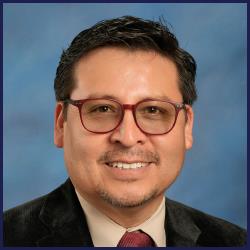English Learners Overview
-
Philosophical Overview:
In alignment to District 300’s mission, to provide engaging and inclusive educational experiences that empower and equip all students to discover, innovate, and succeed now and in the future, the English Learners department in District 300 is to ensure that linguistically diverse students are provided quality education that will enable them to attain English proficiency, achieve academically, and continuously strive to eliminate the achievement gap within a socially, linguistically and culturally supportive environment.
Overview of Grade Levels:
In elementary schools, ESL students are in a general education class. The ESL teacher provides language support tailored to each student’s proficiency level.
In middle schools, a sheltered instruction approach is used to teach both language and content simultaneously. Students are in a sheltered English Language Arts class with an ESL teacher.
In high schools, a sheltered instruction approach is used to teach both language and content simultaneously. Students are in a sheltered English Language Arts class with an ESL teacher.
-

Director of EL Services
and World Languages
David Rojas
David.Rojas@d300.org
Additional Resources
Additional Information
-
About The English Learners Program
The D300 English Learners Program values and respects the rich cultural backgrounds of our students, creating a welcoming environment where high-quality instruction supports the development of English language proficiency and academic success.
English Learners in the Dual Language Program participate in engaging, content-rich curriculum in Spanish and English that promote cross-cultural understanding while developing advanced language proficiency and strong academic achievement.
On Being Bilingual
District 300 believes in developing the whole child. And, we believe that language and literacy, embedded into a rigorous and relevant curriculum, are integral components to achieve this goal. All students need fully developed capacities to read, write, speak, listen, and use language strategically and effectively. As our world becomes more global and connected, the development of language and literacy skills in both English and a second language provides significant educational and career advantages.
The demographics of our district provide a rich environment to foster linguistic and cultural appreciation. In addition, we believe in a strong family and school connection that is built on the talents our students bring into the classroom that will produce individuals who proudly identify themselves as bilingual, billiterate, and multicultural.
English Assessments
How do we know EL students are making progress?
All English Learners (grades K-12) are assessed annually for English proficiency growth and academic progress. The ACCESS test is used to assess English language proficiency while the IAR test is used to assess academic achievement in English.
District 300 uses a variety of academic measures to monitor progress of all learners. In order to make sure students are on track with their learning, District 300 uses local assessments to measure growth. Both EL and general education teachers work collaboratively to ensure students are meeting their yearly growth targets.
Language Acquisition
How long does it take to learn another language?
According to research it takes 5-7 academic years to learn another language (Collier, V.P, & Thomas, W.P, 1997). Every child is different and regardless of the type of EL program they are enrolled in, it can take five years or less for students with a strong foundation in their native language to learn another language and up to nine years or more for students who do not possess a strong understanding of their native language.
There are four major components that drive language acquisition for school: sociocultural, linguistic, academic, and cognitive processes. For students with a primary language other than English, these interdependent processes---cognitive, academic, and linguistic development---must occur in a supportive sociocultural environment through both their first language and their second language to enhance student learning (Collier, V.P, & Thomas, W.P, 2007). The scope of District 300’s EL Programs adheres to these principles.

